05.03.2011: I am back in Australia on business, and luck struck. I am currently in Melbourne, right over the weekend where Avalon Airshow takes place. I rarely have a weekend off during business trips, but this time it worked out, so I spent a nice day today at the airshow.
Avalon is actually not just an airshow, but an Aerospace & Defence Exposition, with an airshow attached. The exposition took place last week, followed by the airshow this weekend. Even though the exposition is a bit “defence heavy”, there was also quite a big part on general aviation That included a nice display of around 30 experimental aircraft.
To start off, however^, here a fairly bit *model airplane* that was parked right at the entrance. That’s Global Hawk, an unmanned surveillance aircraft that flies at an altitude of 65’000 ft / 19’100 m with a range of 14’000 NM / 25’000 km. It has a wingspan of 19 m and an MTOW of 14 tons, and is the largest remote controlled aircraft in the world.

There were quite a few other “big things”, such as two C-17 transporter aircraft, but the one of the Royal Australian Air Force, which should have flown a demo, had to leave to provide earthquake relief in Christchurch, New Zealand


Here now a few of the homebuilt aircraft. This one is a fully aerobatic, something not very often seen in homebuilt aircraft.

Some of them were quite old,…

…some looking quite strange,…

…and there was even one designed, built and registered in India. I did not know there is a homebuilding community in India.

Then there were some racy looking ones,…

…some even racier looking ones (this one with a converted Chevrolet car engine),…

…and then there was an odd thing that looked more like from a Tin Tin comic than from this world. Note that the propeller will spin around the rear fuselage.

Below a kit in an early building stage, it’s a Rans S-19, which was number two in the evaluation for my project. Unfortunately the kit was not available in time, but I had a very good impression at that time of the quality of the kit. A look at the project confirmed that they finally delivered the quality they had promised.

There was also a lot going on in the air, of course. Here a bunch of biplanes…
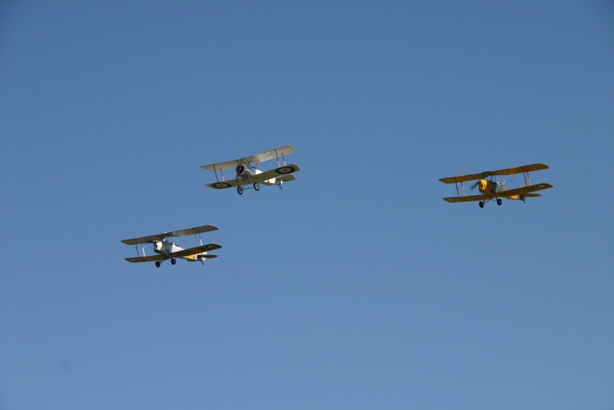
… and some warbirds, which included a Boomerang, Mustang, Spitfire, Kittyhawk, and a Seafire.

It was 75 years ago today that the Spitfire made it’s maiden flight, therefore an extra picture of the one shown.

In the general aviation section there was also a SportCruiser as ready to fly aircraft, which drew quite some attention.

The aerial display included the Roulettes, the aerobatic team of the Royal Australian Air Force, which are flying Pilatus PC-9s.

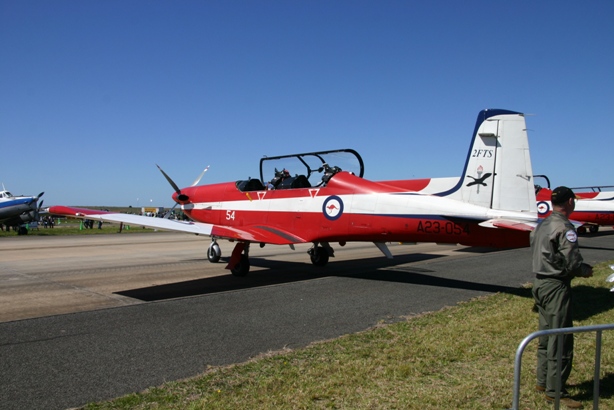
The Royal Australian Air Force also showed off it’s newest planes, the F/A-18 F Super Hornet. That’s a version of the F/A-18 Hornet used in Switzerland, just 25% bigger in size.

The craziest display was however flown by the Italians. They demonstrated the C-27J transport aircraft, which is roughly speaking a twin engine, reduced size version of the Lockheed Hercules (it actually uses the same engines and propellers, and many other parts too from the Hercules. They flew loopings, rolls and many other, crazy aerobatics figures, and that with a 20 ton aircraft.

They ended with a landing with a 12’000 ft/min sink rate and side slipping, just to show what can be done…
On the military side of the static display they showed a runway lighting system that can be installed anywhere in minutes, using LED’s. It even includes a PAPI, which is an optical glide path indicator. That would be something for Lommis to do night VFR flying…..

The absolute star of the static display was the F-22 Raptor, the most advanced fighter in the world. It comes with a price tag of 300 million dollars per piece, no wonder even the US Air Force stopped buying them after 168 were built.


The aerial display also include many vintage jets, such as this Gloster Meteor.

And then there were of course aerobatic displays, first by Matt Hall, the Australian pilot flying in the Red Bull Air Races…

…and by the three times winner of the world aerobatic championship, the Russian Nikolay Timofeev.

For the seaplane lovers they had a Catalina on flying display, which would probably be the ultimate toy if one had the money for it, the go anywhere, carry anything kind of plane to tour the world in.

There was also a guy in a SuperCub that first did a crazy aerobatics display, during which bit’s and pieces of his plane fell off, and then tried to land on a truck. He had to succumb, however, as it was plain too windy.

And finally there was a jet powered glider. It has a small, Czech built jet engine with around 250 lbs of thrust, which gave it quite a climb rate.

After switching off the engine the pilot flew a great aerobatics display, that’s just different if done by a glider.
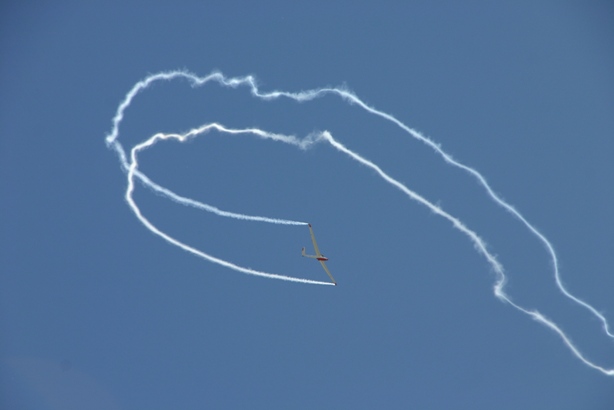
On top of great static and aerial displays the Avalon airshow was also perfectly organized. I went there by train, as V/Line runs extra trains from Melbourne to the nearest station and shuttle busses from there to the airfield. I was a bit worried what would happen if a full train would want to squeeze into buses, but there were so many of them that nobody had to wait more than a minute. Also on the way back that worked perfectly, so it was definitely the easiest way to go there.
24.03.2011: I was hardly back in Switzerland when our club’s chief mechanic called me. He needed someone to fly in (I think they call it break in) the newly overhauled engine in one of our Robin aircraft. He usually does a three hour flight at more than 75% power setting with newly overhauled engines, as recommended by the engine manufacturers, before releasing the plane for regular use. The pilot who usually does this was on vacation, and according to our Part-145 MOE it is on me as the accountable manager to maintain a list of pilots who are permitted to do such technical check-flights. I of course volunteered to do the flight myself. As the weather couldn’t have been much better and as you get quite far in three hours we decided to go and circle Matterhorn, probably the most famous mountain of the Swiss alps. Matterhorn is 4’478 m / 14’690 ft high, but more or less free standing, so you can circle it at approximately 12’500 ft.
We took off after lunch and proceeded via the Walensee,..
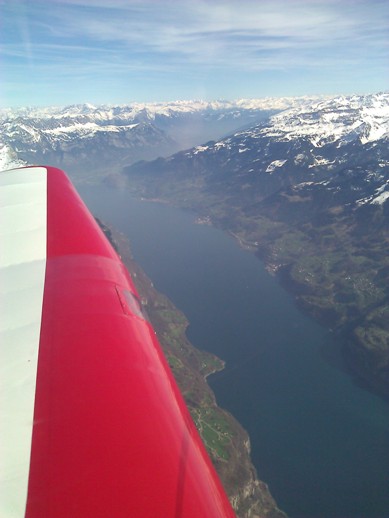
…the Glarus mountains,…
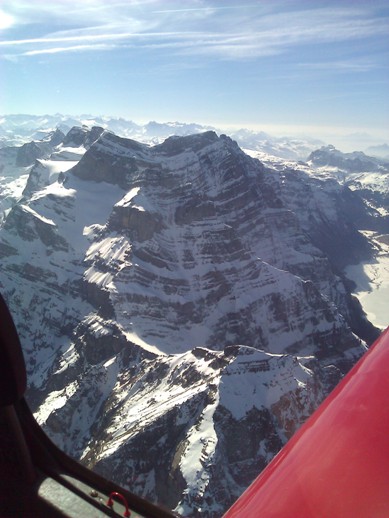
…passed the Tödi,…
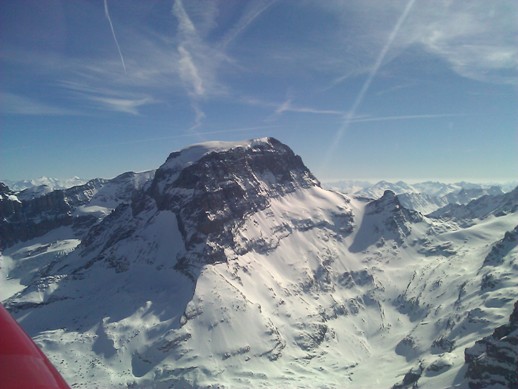
… and the snow fields where a lot of glacier flying takes place. We could see quite many tracks in the snow (see picture below) and at one location we saw a Piper SuperCub parked next to one of the mountain huts.
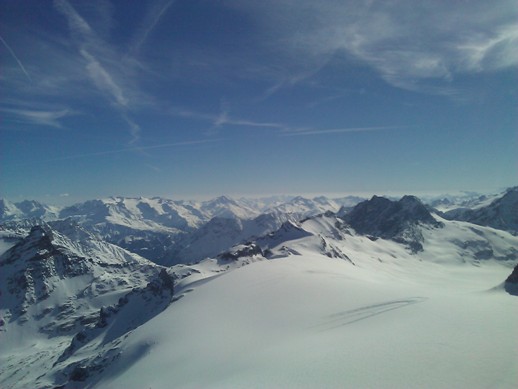
We then proceeded via Andermatt and Brig to Zermatt and the Matterhorn. The sun was from the wrong side, bit it is still every time an impressive sight. We circled the Matterhorn at 12’500 ft, which is still nearly 700 m below the summit, before turning back towards Lommis.
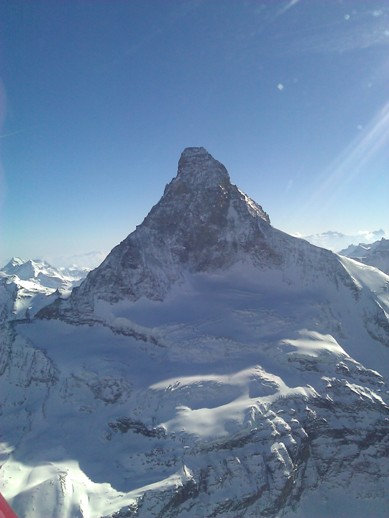
On the way back we had a look at the Aletsch-Glacier, the longest glacier of the Alps.

During the whole flight we flew relatively high, as it was still a check flight. Due to the many airfields along the route (Lommis, Wangen-Lachen, Schänis, Mollis, Buochs, Meiringen, Ambri, Münster, Raron) we stayed most of the time within gliding distance of a runway, but fortunately there was no need to take “advantage” of that. The engine run very smoothly the whole time.
26.03.2011: As every year at the end of March we had our annual “airfield cleaning day” in Lommis today. That’s an event during which the club’s members perform work necessary to prepare the airfield for the season. It includes everything from washing and cleaning our aircraft (see below), cleaning the club house and the hangars, repainting markings, trimming bushes, re-installing the garden furniture outside our “restaurant” etc. Typically around 80 club members show up (including spouses and kids), which means we are normally finished shortly after noon. After a week of beautiful weather some rain was announced today, but we were lucky and it stayed dry the whole day.

Today also was the day where I had to move my plane outside. I don’t have a hangar place yet, but during winter we normally park planes more densely in our hangars so that those that are parked outside during summer find a place in the hangar too. Below my plane at it’s new home with the outside cover installed.
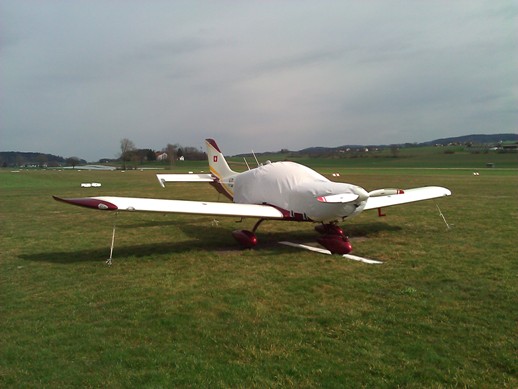
29.03.2011: A day to celebrate! Today I received my unrestricted Permit to Fly!

From now on I’m allowed to fly wherever I want, whenever I want and with whoever I want (no more test flights). I have a lot of prospective passengers on the waiting list, including many who supported the project by providing special skills, tools, infrastructure etc., so I will start working down the list next weekend (they even announced nice weather).
I still have to do the noise measurement, but that’s not a condition for the permit to fly. The EAS has two noise measurement campaigns every year, the next one takes place on the 7th May.
29.03.2011: Today I went to fly in another newly overhauled engine on one of our club aircraft., this time on a Piper Archer II. The plan was to do the same tour as five days ago, but the weather was not as cooperative as on that flight. The western alps were closed already when we took off, so we went to the eastern alps instead. For the first hour and a half we enjoyed some nice views on the skiing resorts of Davos, Flims and St. Moritz, but then the cold front caught up with us and we had to do a low level return flight to Lommis. None the less our mission was accomplished, apart of some minor issues the plane was ready to go out again into service. This one is even commercially certified, it is one of our work horses to do sightseeing flights for the general public.